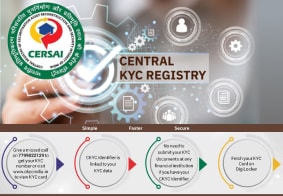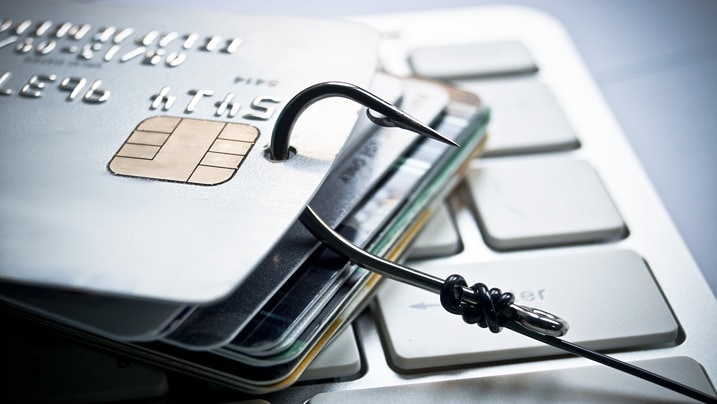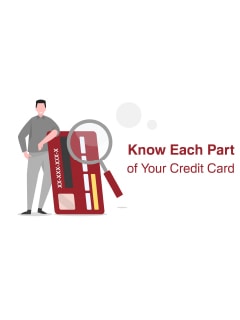CKYC Registry
-
Customer Service Contact us Service request Locate a branch
Find all the help you need
Scan the QR, get our app, and find help on your fingertips

Help CenterSupport topics, Contact us, FAQs and more
-
Login
Are you ready for an upgrade?
Login to the new experience with best features and services
-
Login
Are you ready for an upgrade?
Login to the new experience with best features and services
- Accounts
-
Deposits
IDFC FIRST Bank Deposits
View all Deposits -
Loans
IDFC FIRST Bank Loans
View all Loans - Wealth & Insure
-
Payments
IDFC FIRST Bank Payments
View all Payments -
Cards
IDFC FIRST Bank Cards
View all Cards - Blogs
- Corporate Account
-
Cash Management Services
IDFC FIRST Bank Cash Management Services
View all Cash Management Services - Supply Chain Finance
-
Corporate Lending
IDFC FIRST Bank Lending
View all -
Treasury
IDFC FIRST Bank Treasury
See more details - NBFC Financing
Support topics, Contact us, FAQs and more
- IDFC FIRST Bank Accounts
-
Savings Account
-
Corporate Salary
Account -
Senior Citizens
Savings Account -
First Power
Account -
Current Account
-
NRI Savings
Account -
TASC Institutional
Account -
Savings Account
Interest Calculator
- IDFC FIRST Bank Deposits
-
Fixed Deposit
-
Recurring Deposit
-
NRI Fixed Deposit
-
Safe Deposit Locker
-
FD Calculator
-
RD Calculator
- IDFC FIRST Bank Loans
-
Personal Loan
-
Consumer Durable
Loan -
Home Loan
-
Business Loan
-
Professional Loan
-
Education Loan
-
New Car Loan
-
Pre-owned Car Loan
-
Two Wheeler Loan
-
Pre-owned Two
Wheeler Loan -
Commercial Vehicle
Loan -
Gold Loan
-
Loan Against Property
-
Loan Against Securities
-
Easy Buy EMI card
-
Personal Loan
EMI Calculator -
Education Loan
EMI Calculator -
Home Loan
EMI Calculator
- IDFC FIRST Bank Wealth & Insure
-
FIRST Select
-
FIRST Wealth
-
FIRST Private
-
Mutual Funds
-
Sovereign Gold Bond
-
Demat Account
-
Term Insurance
-
Life Insurance
-
Health Insurance
-
General Insurance
-
Bonds
-
Loan Against
Securities -
Portfolio Management
Service
- IDFC FIRST Bank Payments
-
FASTag
-
Credit Card
Bill Payments -
UPI
-
Funds Transfer
-
Forex Services
-
Pay Loan EMI
- IDFC FIRST Bank Cards
-
Ashva :
Metal Credit Card -
Mayura :
Metal Credit Card -
FIRST Millennia
Credit Card -
FIRST Classic
Credit Card -
FIRST Select
Credit Card -
FIRST Wealth
Credit Card -
FIRST WOW!
Credit Card -
Deals
-
Debit Cards
-
Co-branded Cards
-
Credit Card
EMI Calculator -
FIRST Corporate
Credit Card -
FIRST Purchase
Credit Card -
FIRST Business
Credit Card
- Premium Metal Credit Cards
-
AshvaLifestyle1% Forex₹2,999
-
MayuraLifestyleZero Forex₹5,999
-
FIRST PrivateInvite Only
- Best for travellers
-
MayuraZero ForexMetal₹5,999
-
Ashva1% ForexMetal₹2,999
-
FIRST WOW!Zero ForexTravelLifetime Free
-
FIRST SWYPTravel OffersEMI₹499
-
FIRST Select1.99% ForexLifestyleLifetime Free
-
FIRST Wealth1.5% ForexLifestyleLifetime Free
-
Club VistaraTravelLifestyle₹4,999
-
IndiGo IDFC FIRST Dual Credit CardTravelLifestyle₹4,999
- Max benefits, Free for life
-
FIRST Classic10X RewardsShoppingNever Expiring Rewards
-
FIRST Millennia10X RewardsShoppingNever Expiring Rewards
-
FIRST Select10X RewardsLifestyle1.99% Forex
-
FIRST Wealth10X RewardsLifestyle1.5% Forex
-
FIRST WOW!RewardsTravelZero Forex
-
LIC ClassicRewardsInsuranceShopping
-
LIC SelectRewardsInsuranceShopping
- Reward Multipliers
-
AshvaLifestyleMetal₹2,999
-
MayuraLifestyleZero Forex₹5,999
-
FIRST ClassicNever Expiring RewardsShoppingLifetime Free
-
FIRST MillenniaNever Expiring RewardsShoppingLifetime Free
-
FIRST SelectNever Expiring RewardsLifestyleLifetime Free
-
FIRST WealthNever Expiring RewardsLifestyleLifetime Free
- Rewards & Credit on UPI
-
FIRST Power+FuelUPI₹499
-
FIRST PowerFuelUPI₹199
-
FIRST EA₹NVirtual1% Cashback₹499
-
FIRST DigitalVirtualUPI₹199
-
IndiGo IDFC FIRST Dual Credit CardUPITravelDual cards
- Fuel and Savings
-
FIRST PowerRewardsUPI₹199
-
FIRST Power+RewardsUPI₹499
-
LIC ClassicRewardsInsuranceShopping
-
LIC SelectRewardsInsuranceShopping
- Express and Flaunt
-
AshvaMetal1% Forex₹2,999
-
MayuraMetalZero Forex₹5,999
-
FIRST SWYPEMIOfferMAX₹499
-
FIRST MillenniaRewardsShoppingLifetime Free
- FD Backed rewarding Credit Cards for all
-
FIRST EA₹NVirtualCashback₹499
-
FIRST WOW!Zero ForexTravelLifetime Free
-
CreditPro Balance TransferTransfer & SaveReduce InterestPay Smartly
- IDFC FIRST Bank NRI Forex Solutions
-
Send money to India-Wire transfer
-
Send money to India-Digitally
-
Send money abroad
-
Max Returns FD (INR)
- IDFC FIRST Bank MSME Accounts
-
Platinum Current
Account -
Gold
Current Account -
Silver Plus
Current Account -
Merchant Multiplier
Account -
Agri Multiplier
Account -
TASC Institutional
Account -
Dynamic Current
Account -
World business
Account -
First Startup
Current Account
- IDFC FIRST Bank Business Loans
-
Business Loan
-
Professional Loan
-
Loan Against Property
-
Business Loan for Women
-
Working Capital Loan
-
Construction Equipment Loan
-
Machinery Loan
-
Healthcare Equipment Loan
- IDFC FIRST Bank Business Solutions
-
Payment Solutions
-
Tax Payments
-
Doorstep Banking
-
Point of Sale (POS)
-
Escrow Accounts
-
NACH
-
Payment Gateway
-
UPI
-
Virtual Accounts
-
As per amendment in the Income Tax Rules, PAN or Aadhaar are to be mandatorily quoted for cash deposit or withdrawal aggregating to Rupees twenty lakhs or more in a FY. Please update your PAN or Aadhaar. Kindly reach out to the Bank’s contact center on 1800 10 888 or visit the nearest IDFC FIRST Bank branch for further queries.
-
-
Most Searched
Sorry!
We couldn’t find ‘’ in our website
Here is what you can do :
- Try checking the spelling and search
- Search from below suggestions instead
- Widen your search & try a more generic keyword
Suggested
Get a Credit Card
Enjoy Zero Charges on All Commonly Used Savings Account Services
Open Account Now
Credit Card
What is skimming of Credit Cards
Key Takeaways
‘Skimming’ is when a scammer installs a device called a ‘skimmer’ on a credit card reading device to obtain the personal credit card information of unsuspecting cardholders.
Skimming can occur at ATMs, merchant establishments, restaurants, and petrol pumps.
You can prevent skimming by performing a physical check of the card reader/POS machine and checking if it has any parts that detach before paying.
Once you are sure about being a victim of a skimming attack, you must immediately contact the bank and request it to block your card.
Introduction
Credit cards are considered to be one of the most convenient modes for completing online payments. You can now sign up for a credit card through a completely online application procedure and manage your card at all times via your mobile banking app. However, the threat of online frauds like ‘skimming’ continues to impact the security of credit card transactions. Scammers use a device called a ‘skimmer’ to steal your personal credit card information. Read on to know more about the skimming of credit cards and ways to avoid it.
READ MORE
What is credit card skimming?
Credit card companies and card-issuing banks often advise customers to exercise caution when making a credit card transaction at a POS machine since it can lead to data theft. Credit card skimming is one of the many methods by which scammers can obtain an individual’s personal data when they use their card at an ATM or a POS machine.
In the case of credit cards, scammers attach a device called a ‘skimmer’ to POS machines in order to collect personal data such as the individual’s credit card number, credit card expiration date, their full name, etc. This procedure is called ‘skimming’. Credit card skimming can also lead to identity theft. IDFC FIRST Bank’s credit cards employ a dual-layer chip and PIN security system along with several other verification methods to protect its customers from skimming of credit cards.
To reduce the chances of being at the receiving end of a skimming attack, you should also prioritise choosing a secure mobile banking app. IDFC FIRST Bank’s mobile banking app offers security features like 2FA (two-factor authentication) that uses an additional layer of security to make it more difficult for scammers to access your credit card information.
How does credit card skimming work?
A credit card skimming attack is a fast and interactive method of obtaining an individual’s credit card data from ATMs and scanners (e.g. – POS machines). In a skimming attack, the scammer uses surveillance devices, unsolicited emails, and malicious JavaScript code (used in cyber theft) to secretly capture and transmit cardholder data in real time. Skimming attacks can be divided into two major categories –
- If a ‘skimmer’ is attached to a POS terminal, the attack is called “Physical skimming”: As mentioned earlier, these skimmers can be attached to ATMs and payment terminals (including POS machines). Once installed, the skimmer reads the magnetic stripe or chip on the card to obtain discretionary data and a cryptogram that validates transactions. In ATMs, skimmers are generally placed near the card slot or magnetic swipe reader.
- “Digital skimming” involves skimming via online modes of communication: This type of skimming involves the scammer sending a phishing email or message to the individual in question that infects their device with malware that covertly steals payment data during checkout.
Skimmers generally look for an individual’s credit card details such as their CVV, card number, and expiration dates. They also look for personal identifiable information such as the individual’s name, address, phone number, Aadhaar card details, and other identity-related information.
What happens to your card after it has been skimmed?
After your card has been skimmed using a skimmer attached to an ATM or a POS machine, it can be used for various unauthorised transactions. Here are some of the possible consequences of credit card skimming –
- The scammer can commit identity theft by misusing your credit card information. They can set up a duplicate account using the data collected from your credit card and can also apply for loans in your name. This can have a direct impact on your credit score.
- Scammers can use your credit card information to make over-the-phone or online purchases.
- They can transfer your credit card information to a third party who may use it to create a counterfeit credit card.
- In case your credit card does not have a zero liability policy – which means that in case of a fraud, you (the cardholder) will not be responsible for repaying the funds used – you might have to repay the amount lost to fraud. Fortunately, for customers, it is convenient to dispute fraudulent charges with banks today (even online).
Common places where credit card skimming takes place
Here are some of the common places where a credit card skimming can take place –
- ATMs: Whenever you visit an ATM, you must always perform a physical inspection to check if the machine has a skimmer-like device. In certain cases, a tiny camera is installed in the ATM that records cardholders entering their PIN. Scammers might also steal PIN numbers by placing fake keypads over a real ATM keypad.
- Petrol pumps: If you have the habit of using your credit card to pay for petrol or diesel, you must beware of possible skimming in such a scenario too. Check if the POS machine being used has a skimmer attached to it. However, the IDFC FIRST Bank Power+ credit card comes with advance security measures like Chip and PIN and allows you to securely integrate with any UPI app for convenient payments. In addition, the FIRST Power+ credit card offers up to 6.5% savings on fuel purchases, amounting to an annual savings of up to ₹18,500, which is enough to buy 175+ litres of fuel. You also get attractive welcome benefits and privileges on shopping expenses and 0% interest on cash withdrawal up to due date with just a cash advance fee of ₹199.
- Retail stores and restaurants: In retail stores and restaurants that allow customers to make payments via a POS machine, you might still encounter cases of skimming. It is advisable to shop at trustworthy stores that deploy transparent modes of financial transactions.
How to spot a credit card skimmer?
While credit card skimmers might be difficult to spot, you can follow a few good practices to know whether the merchant in question has a skimmer attached to their POS machine –
- At an ATM:
Here are some steps you can follow to check for a credit card skimmer at an ATM –
- Check for alignment issues between the card reader and the panel underneath the reader.
- Check the ATM keypad. As mentioned earlier, scammers can affix fake keypads above original keypads to obtain personal information.
- Look inside the card reader to see if something is already inserted in it. If you do find something, it could be a thin plastic circuit board that can steal your credit card information.
- At petrol pumps, restaurants, and other merchant shops:
- You must physically inspect the POS machine handed to you in order to check for any fraudulent devices.
- involved in a skimming scam, you might have no way to check if it is the case. This is because servers generally do not hand the POS machine to the customers while helping them initiate their payment. In such situations, you can always request the server to let you perform a physical check of the POS device before making a payment.
What to do if your credit card is skimmed?
If your credit card has been skimmed, you must immediately follow these steps –
- Double-check by referring to SMS alerts and bank notifications: If you suspect that you have been the victim of a skimming attack, you must first check your bank notifications on your mobile banking app or SMS alerts. If you detect at least one unauthorised or suspicious reaction, you can move to the next step. If you still wish to confirm whether your card has been skimmed, you can contact the bank’s customer service team to verify the same.
- Immediately contact the bank and request it to block your credit card: Next, you must ask the bank to block your credit card. This is the most important step as it can help prevent all forms of online fraud including identity theft.
- Check with the bank about the next steps involved: Finally, you should check with the bank about the next steps. The bank might require you to follow certain steps to retrieve your credit limit. You must follow all these steps as instructed.
Tips to prevent skimming of credit card
To avoid credit card skimming, you must be constantly aware of all activities involving your credit card. Here are some tips you can follow to prevent the skimming of your credit card –
- Regularly check your credit card balance: Doing so can help you instantly detect any unauthorised or suspicious transactions made using your credit card and plan for the timely repayment of your credit card dues.
- Check your credit card statements: Checking your monthly credit card statements can help you know all the details of all your credit card expenses in the past month, thereby helping you protect yourself from skimming attacks.
- For additional security, prefer contactless modes of online transfer: You can also choose to link your credit card to a mobile banking app like the IDFC FIRST Bank mobile banking app or a service like UPI to avoid using your physical card while making an online transaction.
- Choose a mobile banking service that offers high security: While choosing your card, you should also analyse the mobile banking services offered by the bank. IDFC FIRST Bank’s highly secure mobile banking services help customers protect their credit card information at all times.
- Turn on SMS alerts for your credit card: Finally, by turning on alerts for your credit card, you can know about every single credit card activity 24/7.
Conclusion
To safeguard against the risk of credit card skimming, vigilance is key. By choosing secure services like the IDFC FIRST Bank Credit Cards, you benefit from robust features such as chip-and-PIN technology and enhanced mobile banking security, ensuring your transactions remain safe. Additionally, simple precautions like inspecting payment devices, regularly monitoring statements, and enabling SMS alerts can provide added protection. With IDFC FIRST Bank's secure offerings, you can confidently enjoy the convenience of credit cards while minimising the risks of fraud.
Disclaimer
The contents of this article/infographic/picture/video are meant solely for information purposes. The contents are generic in nature and for informational purposes only. It is not a substitute for specific advice in your own circumstances. The information is subject to updation, completion, revision, verification and amendment and the same may change materially. The information is not intended for distribution or use by any person in any jurisdiction where such distribution or use would be contrary to law or regulation or would subject IDFC FIRST Bank or its affiliates to any licensing or registration requirements. IDFC FIRST Bank shall not be responsible for any direct/indirect loss or liability incurred by the reader for taking any financial decisions based on the contents and information mentioned. Please consult your financial advisor before making any financial decision.
The features, benefits and offers mentioned in the article are applicable as on the day of publication of this blog and is subject to change without notice. The contents herein are also subject to other product specific terms and conditions and any third party terms and conditions, as applicable. Please refer our website www.idfcfirstbank.com for latest updates.






















